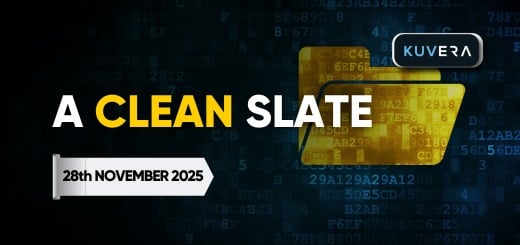In this edition, we talk about the surge in bitcoin to record highs and the reasons behind it. We also talk about the latest inflation print and why it makes the RBI’s job tricky, and what the quarterly earnings of fast-food chains show.
Welcome to Kuvera’s weekly digest on the most critical developments related to business, finance, and the markets.
tl;dr Hear the article in brief instead?

Jamie Dimon, the CEO of the biggest US bank JP Morgan Chase, has called it a “fraud” and “worse than tulip bulbs”, referring to the 17th-century tulip mania in the Netherlands. Alan Greenspan, who steered American monetary policy for nearly two decades as head of the US Federal Reserve, called it “irrational”. Warren Buffett, the legendary American investor and head of Berkshire Hathaway, compared it to “rat poison”.
And yet it has shrugged off the sharp criticism and defied the odds time and again. To borrow from another American great, the author Mark Twain, the reports of its death were greatly exaggerated.
Any guesses what are we talking about?
Well, we are talking about bitcoin, the world’s biggest cryptocurrency. And for good reason.
Bitcoin surged past the $90,000 level this week on expectations that Donald Trump’s ascendancy as the next US president in January 2025 will be a boon for cryptocurrencies.
The digital currency hit a record high of $93,434 on Wednesday, elevating its market capitalisation to $1.78 trillion, according to CoinMarketCap, a website that tracks prices of crypto assets.
In fact, bitcoin’s value has jumped by a third since the Nov. 5 presidential election that Trump won by comprehensively defeating Democrat rival Kamala Harris. Another cryptocurrency, ether, has also clocked similar gains while dogecoin, promoted by Trump ally and billionaire Elon Musk, has soared 150%.
To say that bitcoin is volatile would be an understatement. Sample this: bitcoin lost three-fourths of its value between November 2021 and December 2022, falling to around $17,100 from almost $69,000. Then, in 2023, its value doubled. And now, it is on course to double again this year.
But why are cryptocurrencies gaining now?
It isn’t yet clear how Trump would go about doing that but the possibility of greater regulatory clarity and a supportive government were enough to drive a speculative surge in cryptocurrencies.
Many observers now expect bitcoin to cross $100,000 soon. So, is it time to invest in cryptocurrencies again or have we missed the bus already? We can’t say, of course. But, as always, we suggest staying cautious, take the risks per your own appetite and capabilities, and avoid getting caught up in any modern-day tulip mania!
Know Your Onions
While virtual currencies are touching new records, in the real world, vegetable prices are hitting new highs in India.
Government data released this week showed that retail inflation accelerated to a 14-month high of 6.21% in October from September’s 5.49%. Food inflation soared to 10.87% in the latest month from 9.24% the previous month.
The surge was driven by a 42.18% jump in vegetable prices, accelerating from 36% in September. Several other food items, too, turned costlier. The inflation rate was 6.94% for cereals, 7.43% for pulses and 9.51% for oil and fats.
A separate set of data showed that wholesale price-based inflation jumped to a four-month high of 2.36% year on year in October from 1.84% in September.
Food prices climbed 11.6% year on year with vegetable prices soaring 63%, versus 9.5% and 48.7%, respectively, in September. Cereal prices jumped 7.9% versus an 8.1% rise a month ago.
The data isn’t a surprise, frankly, and anyone who goes grocery shopping would have known how high prices of everything from tomato and onion to cooking oil and petrol and LPG cylinders are hurting the common people.
The inflation print, along with the rupee’s weakness, also makes policymakers’ job difficult and effectively rules out the possibility of a reduction in interest rates by the Reserve Bank of India when it reviews its monetary policy next month. This is because the RBI has the mandate to keep inflation in a range of 2-6%, with a medium-term target of 4%.
At its last meeting in October, the RBI had changed its policy stance to ‘neutral’ from ‘withdrawal of accommodation’, indicating that it was preparing for lower rates in coming months. The latest data dashes those hopes for now, more so since prices are likely to remain elevated for the next couple of months.
But how long can the RBI hold off from cutting rates will also depend on other factors, such as the slowing economic growth. While the RBI has so far maintained its GDP growth estimate at 7.2% for 2024-25, many economists and analysts have started moderating their expectations due to weak consumption, especially in urban areas. And that brings us to our next topic.
Pizzas and Burgers
High inflation isn’t just pinching household budgets and slowing consumption. It is also affecting corporate earnings.
In the Oct. 25 edition of our newsletter, we talked about the muted earnings of FMCG giants such as Hindustan Unilever, Nestle India and ITC. This week, we take a look at some of India’s biggest fast-food restaurant chains.
Jubilant FoodWorks, which operates the Domino’s Pizza outlets, said second-quarter consolidated net profit fell to Rs 64.05 crore from Rs 97.2 crore a year earlier. Revenue from operations rose 43% to Rs 1,955 crore, powered by the addition of new stores.
Devyani International, the operator of KFC, Pizza Hut and Costa Coffee stores, missed analysts’ estimates as profit fell to about Rs 170,000 from Rs 33.35 crore rupees a year earlier, when it had a one-time gain of Rs 13.99 crore.
Revenue surged 49% to Rs 1,222 crore, as it increased its store count to 1,557 in India from 1,298 last year. However, same-store sales—a key metric for retail chains—at its Pizza Hut and KFC stores declined 5.7% and 7%, respectively.
Sapphire Foods, which also operates KFC and Pizza Hut outlets in India, posted a loss of Rs 3.04 crore for the July-September quarter, compared with a profit of Rs 15.34 crore a year earlier.
The company, which runs over 900 restaurants in India, Sri Lanka and Maldives, said revenue from operations climbed 8% to Rs 696 crore as it added 23 more restaurants. However, same-store sales slipped 8% at KFC restaurants across India and fell 3% at Pizza Hut stores. “Demand conditions continued to be muted,” the company said in a statement.
Restaurant Brands Asia, the operator of Burger King stores, reported a wider loss of Rs 60.17 crore, compared with a loss of Rs 46.03 crore a year earlier. Revenue rose just 1% to Rs 632 crore. Same-store sales fell 3%, compared with a 3.5% growth a year ago “due to subdued demand”, the company said.
Westlife Foodworld, which runs McDonald’s restaurants in west and south India, said consolidated profit fell to just Rs 36 lakh in the second quarter from Rs 22.37 crore a year ago. Same-store sales declined 6.5%, although overall revenue edged up 0.5% to Rs 618 crore due to the addition of new stores.
SIP by SIP
While consumers are tightening their purse strings, retail investors aren’t. At least not yet, if the latest data from Association of Mutual Funds in India (AMFI) is any indication.
Data from the industry body showed this week that inflows into equity mutual funds jumped to a record high of Rs 41,887 crore in October. This is up 22% from September and partly offsets the more than $11 billion in foreign outflows.
Money coming in through systematic investment plans (SIPs) rose to Rs 25,323 crore from Rs 24,509 crore in September and the number of SIP accounts surged past 10 crore.
Inflows into large-cap funds almost doubled to Rs 3,452 crore in October from the previous month. Net inflows into mid-cap schemes soared 50% to Rs 4,683 crore while small-cap funds recorded a 23% jump to Rs 3,772 crore. Sectoral and thematic funds continued to top the charts with Rs 12,279 crore despite a 7% fall in inflows during the month.
Essentially, the numbers underline the investors’ resilience and their willingness to continue investing despite the 8-10% drop in the stock markets over the past month and a half.
If the stock markets correct further, should you continue to invest, pause or top-up your bets? Well, it can’t be one-size-fits-all. So, as we always say, evaluate your goals, asset allocation and investing strategies, and adjust if needed.
Market Wrap
Indian stock markets continued to ride downhill this week, pulled lower by weak corporate earnings and a higher-than-expectation inflation number that reduces the probability of an interest rate cut.
The 30-stock Sensex fell 2.4% while the 50-stock Nifty closed about 2.5% lower. Both indices are now down almost 10% from their record highs in September-end.
IT companies Infosys, Tech Mahindra, TCS, HCL Tech, and Wipro were the only notable gainers this week on expectations a weak rupee will boost software services exports.
Biscuits maker Britannia and Asian Paints were the biggest Nifty losers this week after reporting a lower quarterly profit that missed analysts’ forecasts. Tata Steel, Shriram Finance, NTPC, Apollo Hospitals, Bharat Electronics, State Bank of India and Adani Ports were the other major losers.
Earnings Snapshot
- Hindalco consolidated net profit jumps 78% to Rs 3,909 crore, tops estimates
- ONGC standalone profit grows 17% to Rs 11,984 crore, exceeds forecasts
- Asian Paints Q2 profit nearly halves to Rs 695 crore, missing forecasts
- Hyundai India Q2 profit skids 16.5% to Rs 1,338 crore vs Rs 1,602 crore a year earlier on lower sales
- Britannia consolidated net profit declines 10% to Rs 531 crore, missing estimates
- Shree Cement Q2 profit plunges 81% to Rs 93.13 crore but tops forecasts
- Vodafone Idea Q2 loss narrows to Rs 7,176 crore vs Rs 8,738 crore a year ago
- Eicher Motors net profit revs up 8.3% to Rs 1,100 crore on higher sales of bigger bikes
- Zydus Lifesciences Q2 consolidated net profit climbs 14% to Rs 911 crore
- Chemicals maker BASF India’s Q2 profit drops 14.2% year on year to Rs 128 crore
- Blue Dart Express Q2 consolidated nete profit slips 14% to Rs 62.84 crore
- State-run BEML’s Q2 profit falls 1.5% to Rs 51 crore as demand for heavy machinery slows
- Ola Electric Q2 loss shrinks to Rs 495 crore from Rs 524 crore a year earlier
- Nykaa Q2 consolidated profit soars 72% to Rs 10.04 crore
- Sula Vineyards Q2 profit falls 37% to Rs 14.48 crore on lower urban demand
Other Headlines
- Elon Musk’s Starlink seeking security clearance for Indian satellite broadband licence
- Enforcement Directorate to summon Amazon, Flipkart executives as regulatory scrutiny grows
- Swiggy shares end with nearly 17% gain on stock market debut
- NTPC Green Energy sets IPO price band of Rs 102-108 per share to raise Rs 10,000 crore
- Government’s net direct tax collection increases 15.4% year on year to Rs 12.1 trillion during April 1-Nov. 10
- State Bank of India lowers FY25 deposit growth forecast to 10-11% from 12-13%
- RBI retains SBI, HDFC Bank, ICICI Bank in list of too-big-to-fail banks
- India’s industrial output rises 3.1% year-on-year in September, recovering from a contraction in August
- Two people die in fire at Indian Oil Corp’s Gujarat refinery; eight injured in fire at IOC’s Mathura refinery
- Germany’s Carl Zeiss opens global capability centre in Bengaluru, to double staff in 3 years
That’s all for this week. Until next week, happy investing!
Interested in how we think about the markets?
Read more: Zen And The Art Of Investing
Watch here: Investing in International Markets
Start investing through a platform that brings goal planning and investing to your fingertips. Visit kuvera.in to discover Direct Plans and Fixed Deposits and start investing today. #MutualFundSahiHai #KuveraSabseSahiHai












